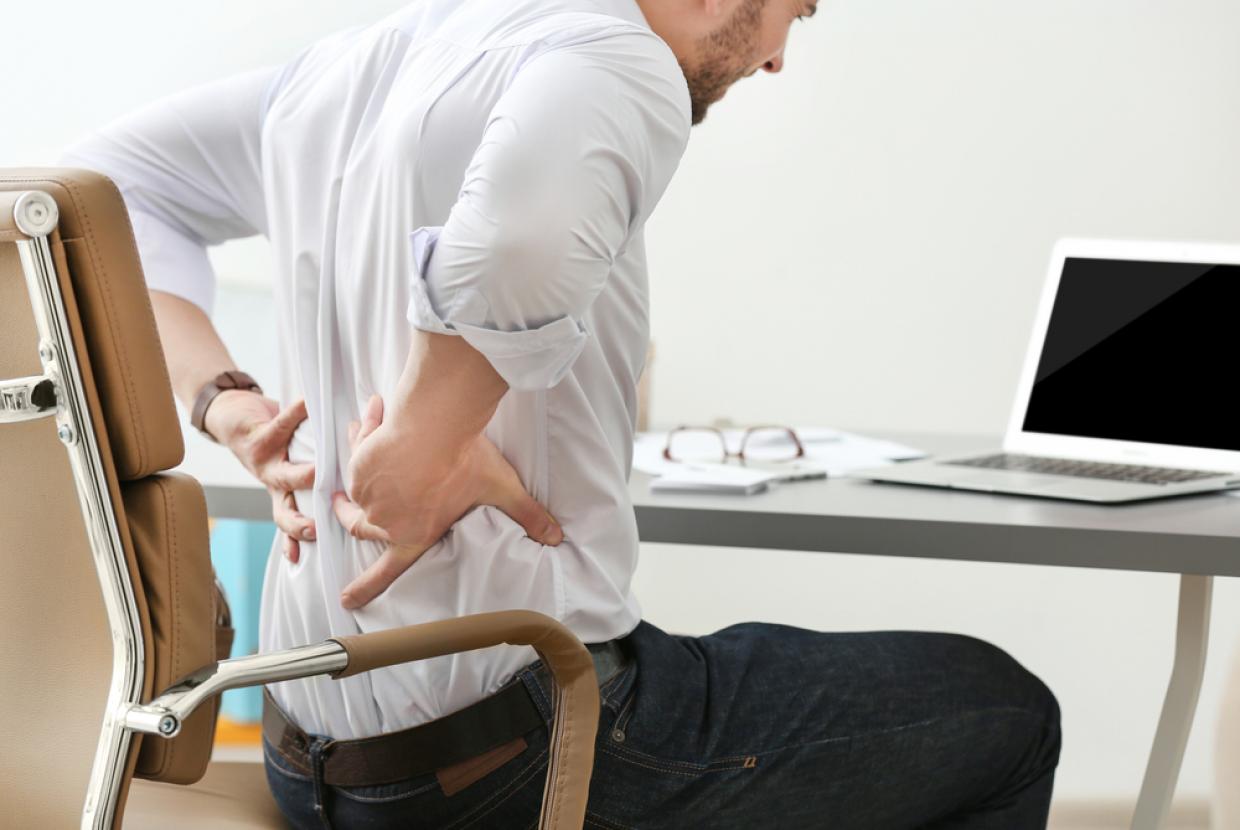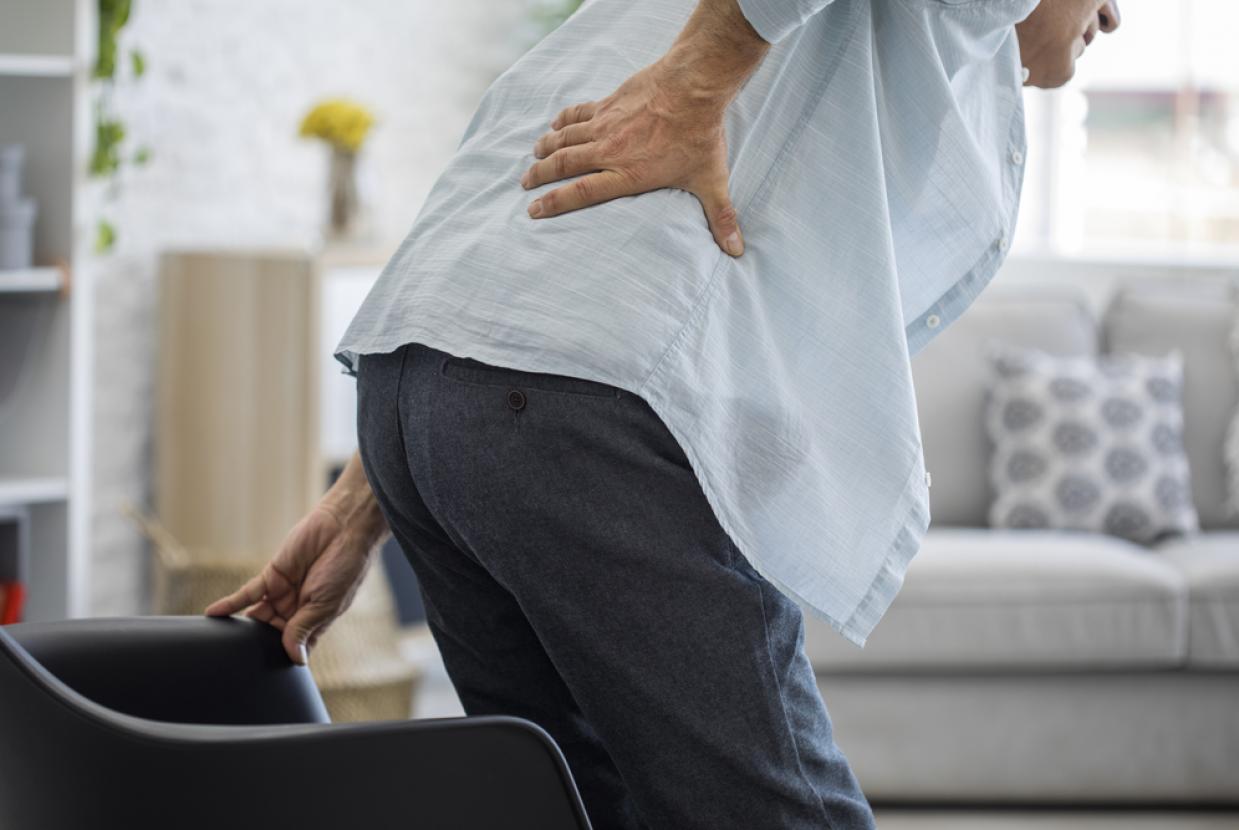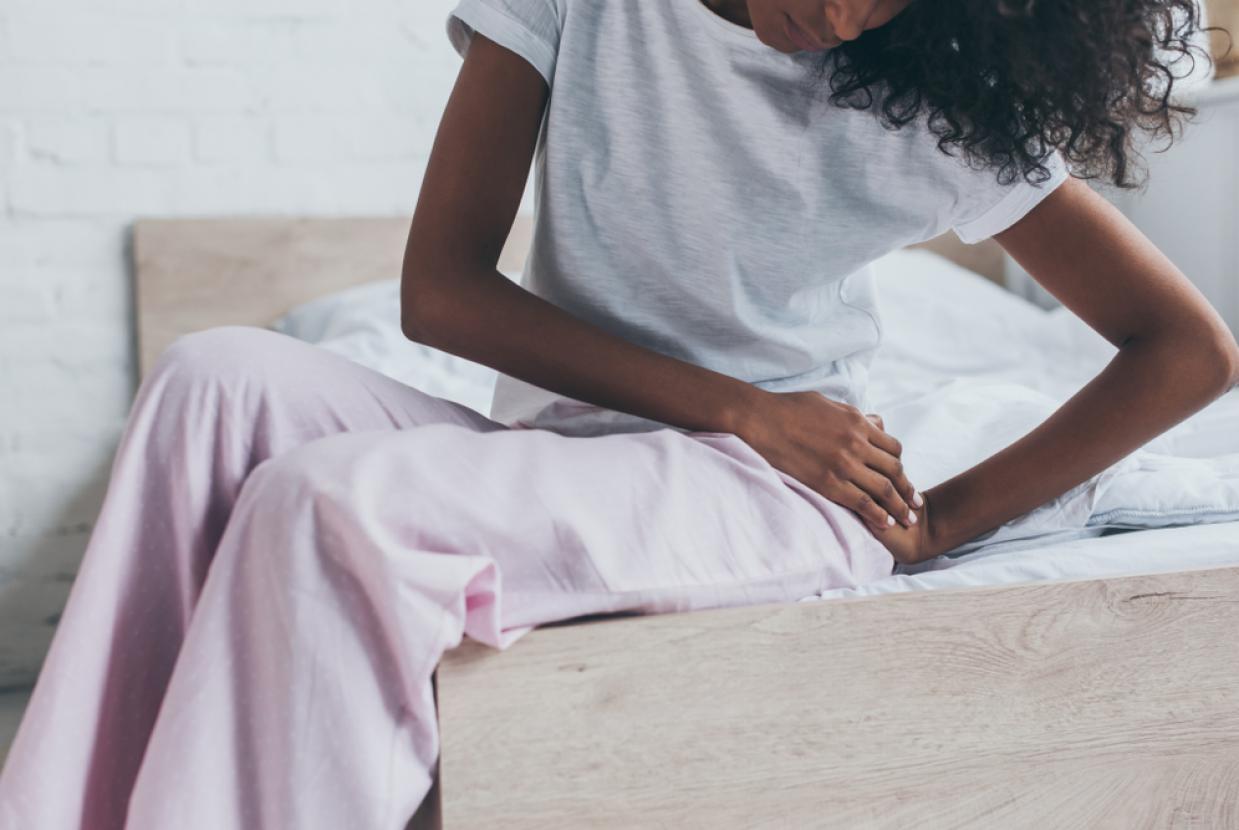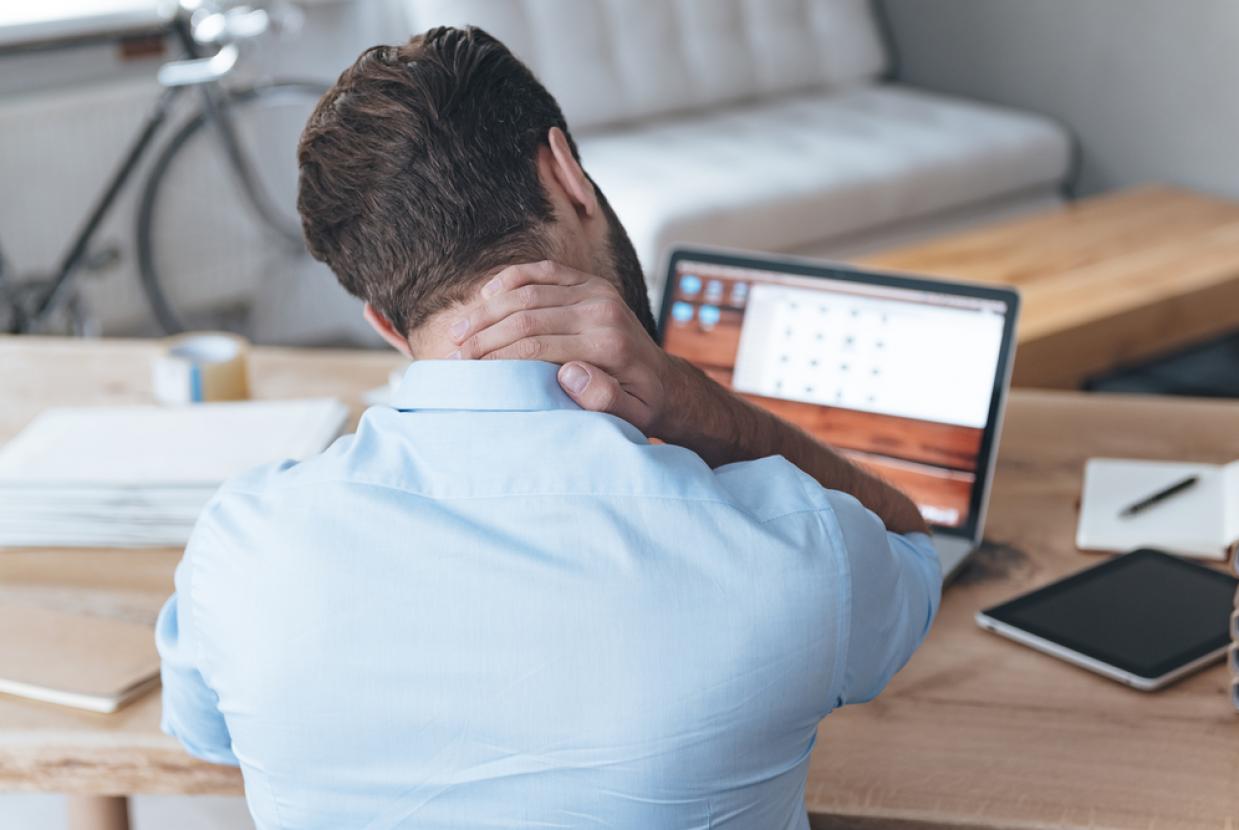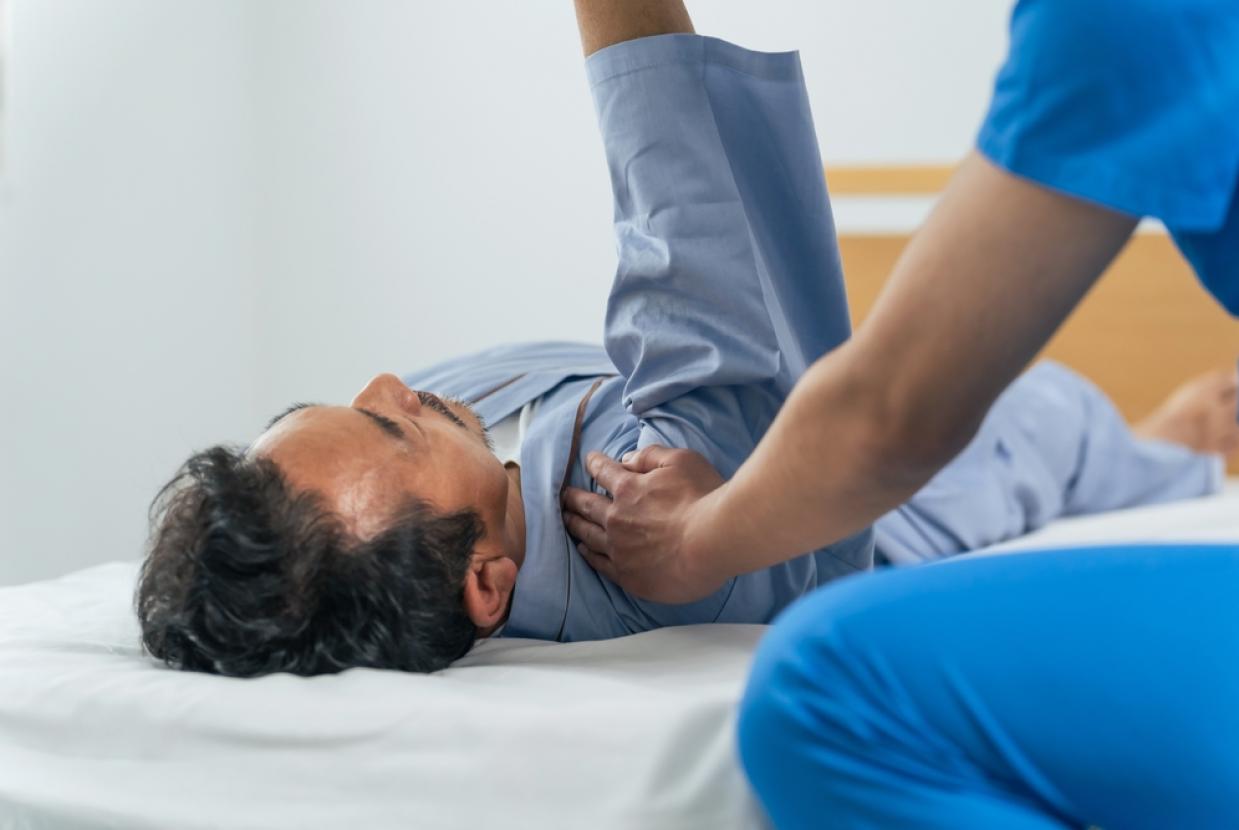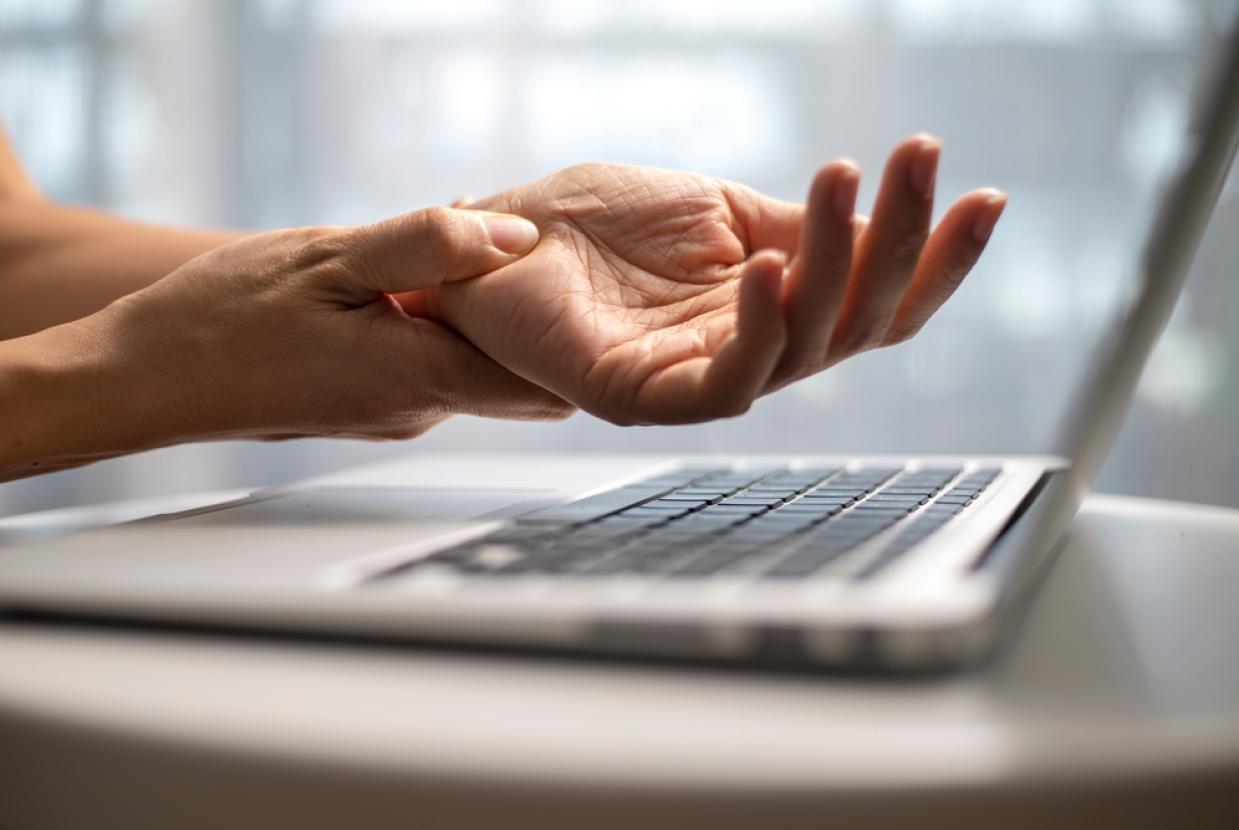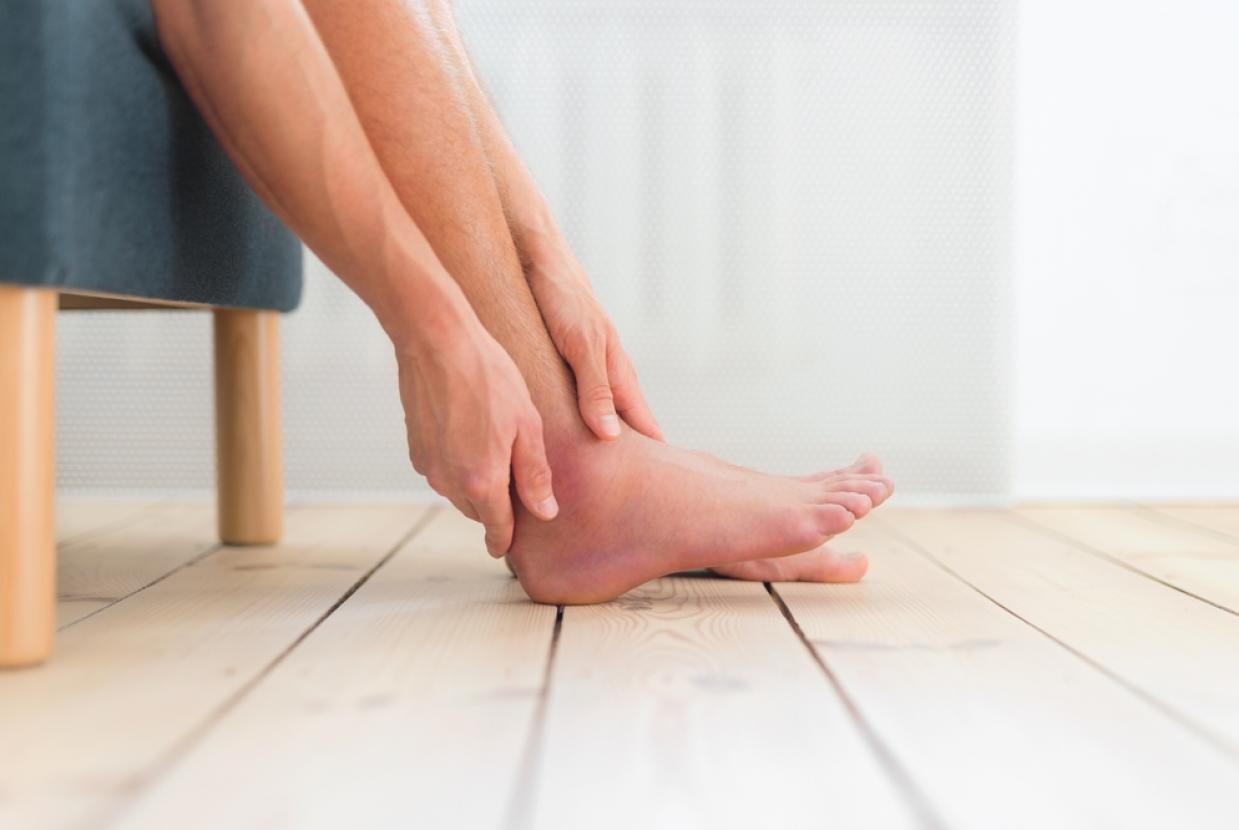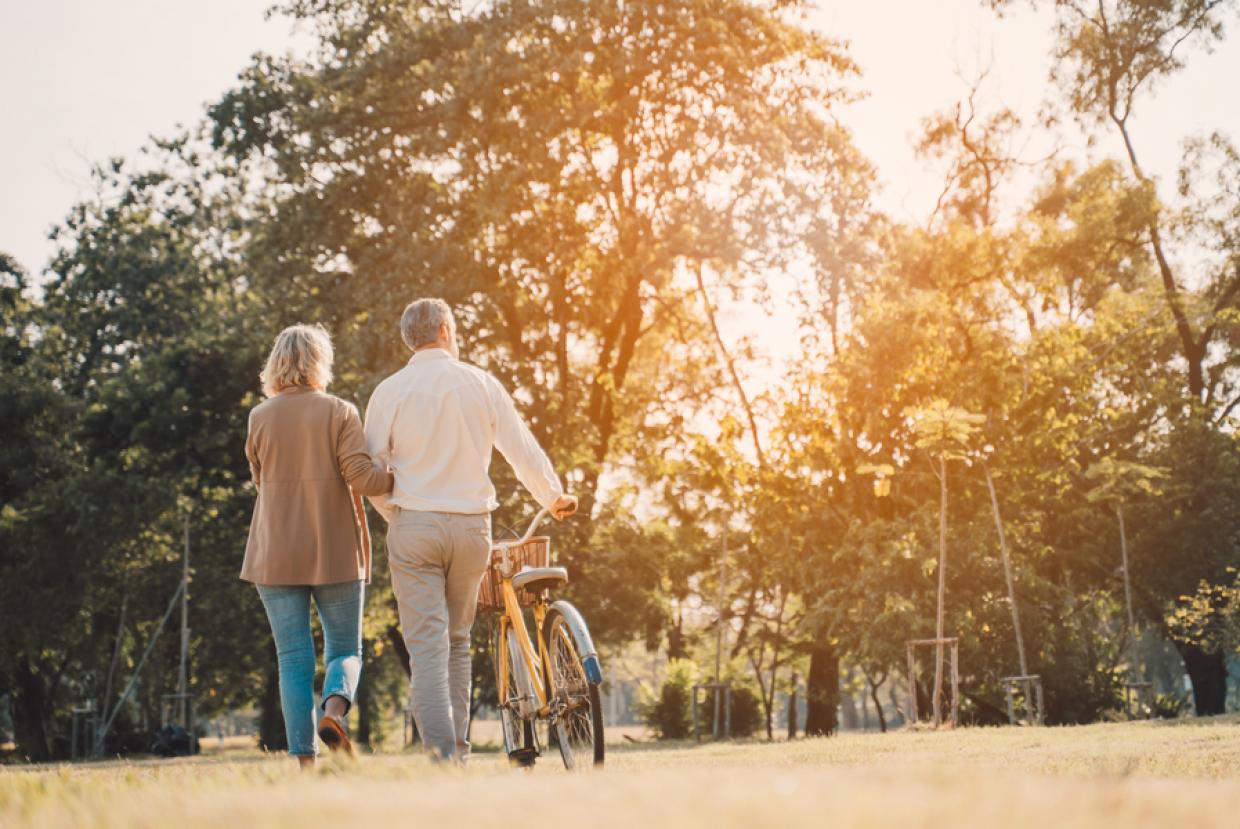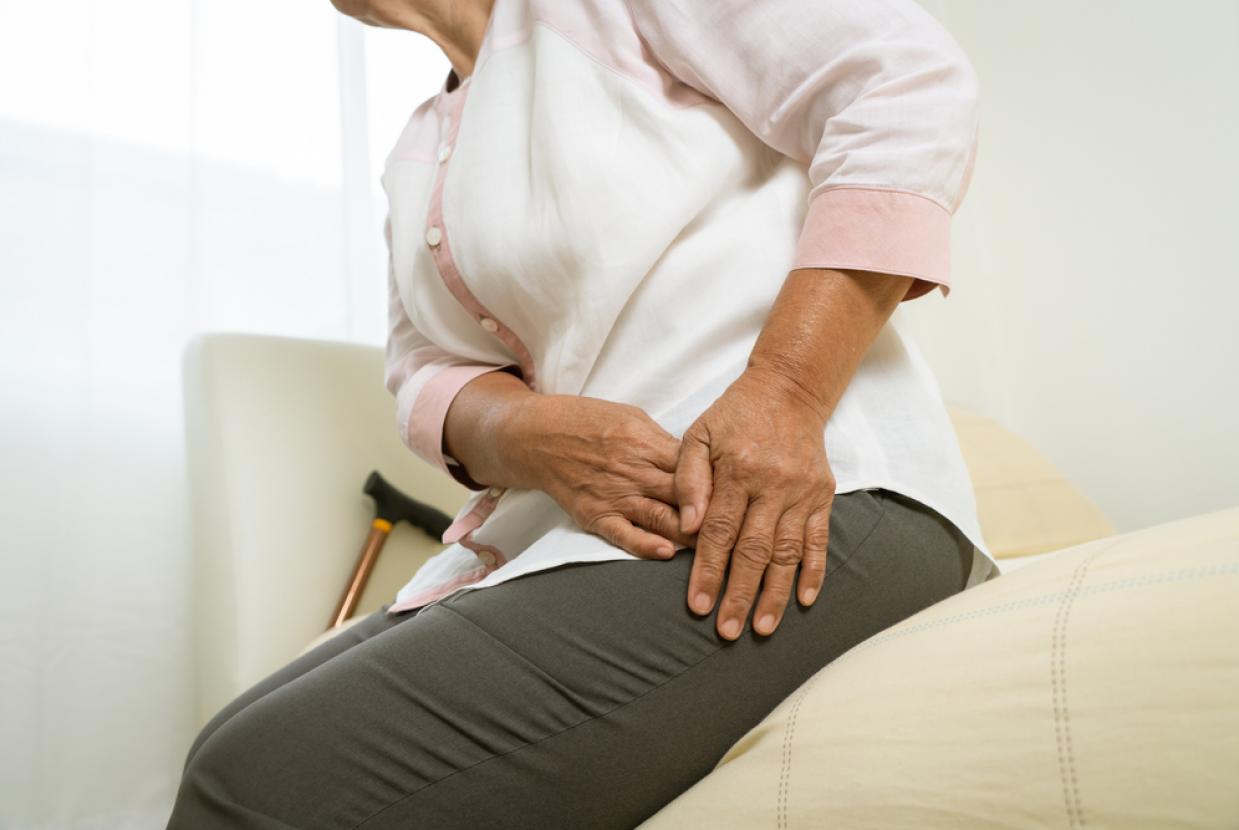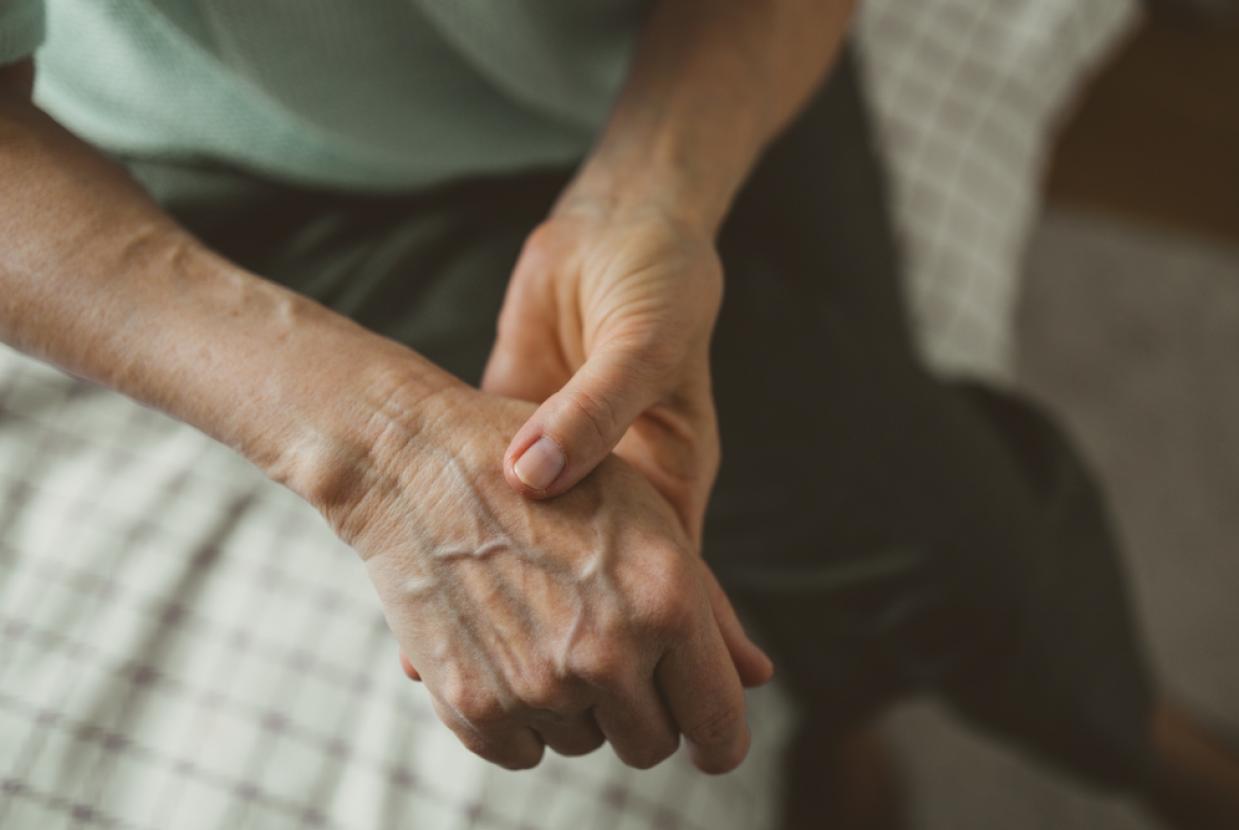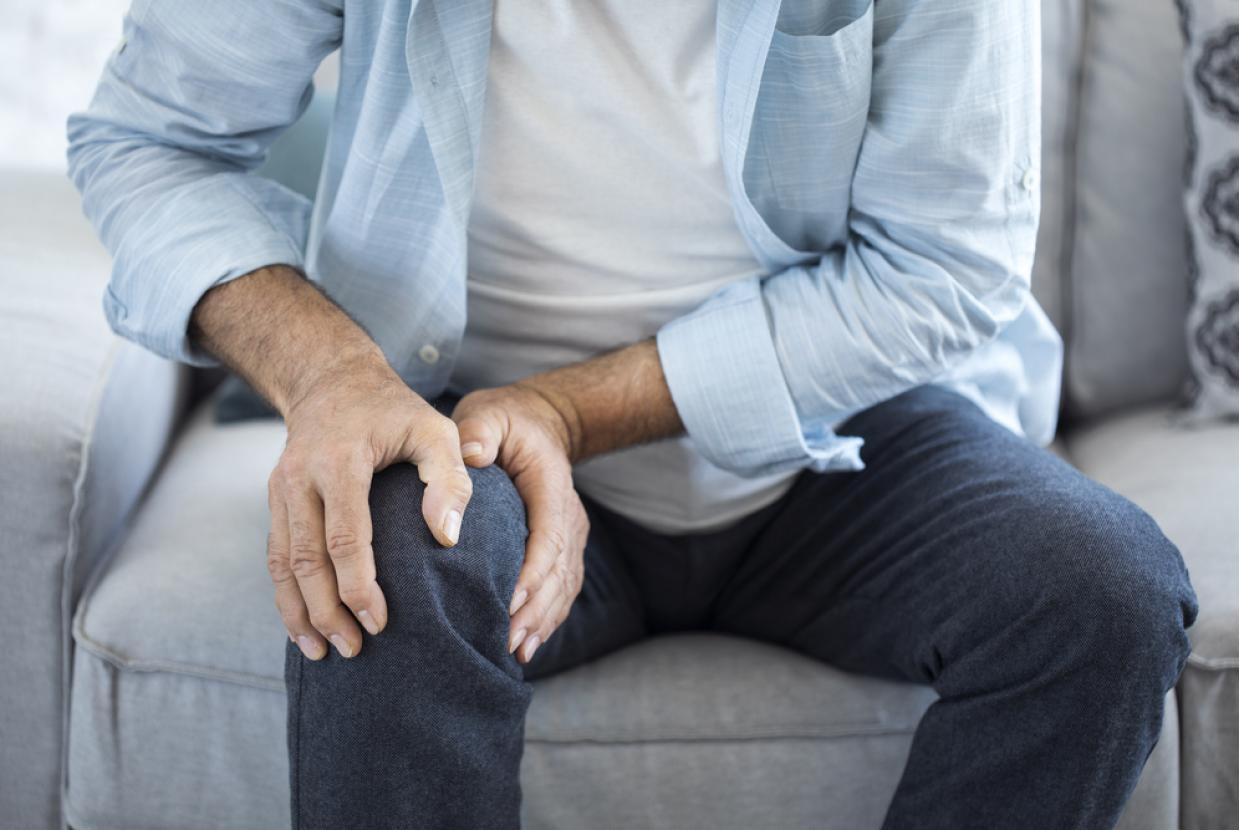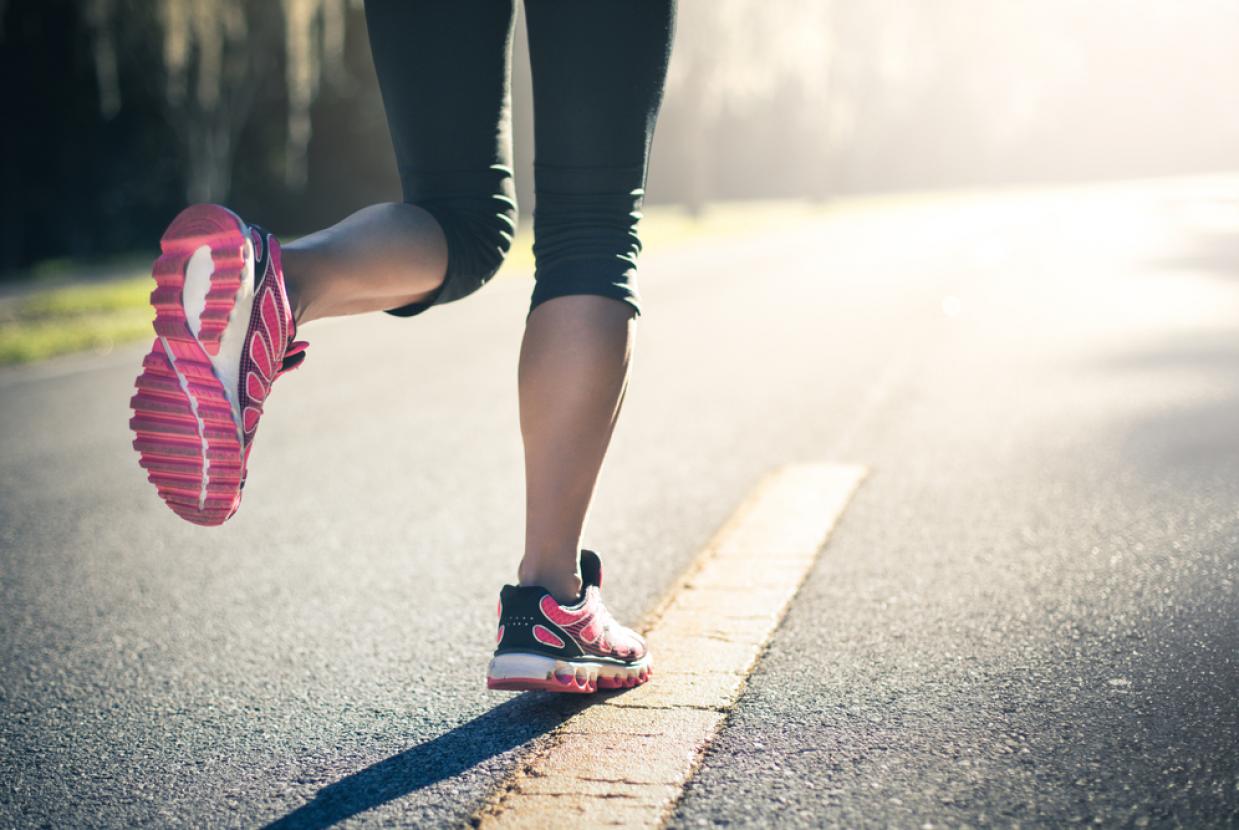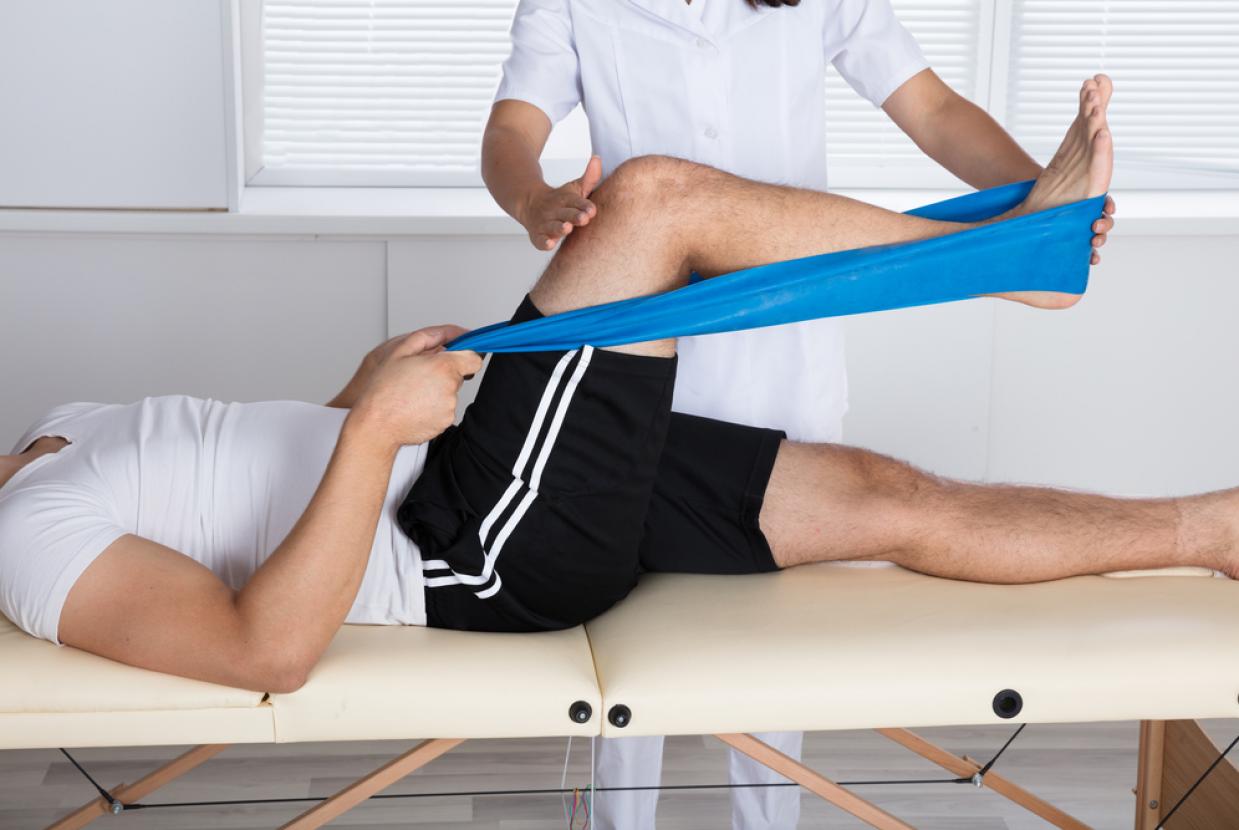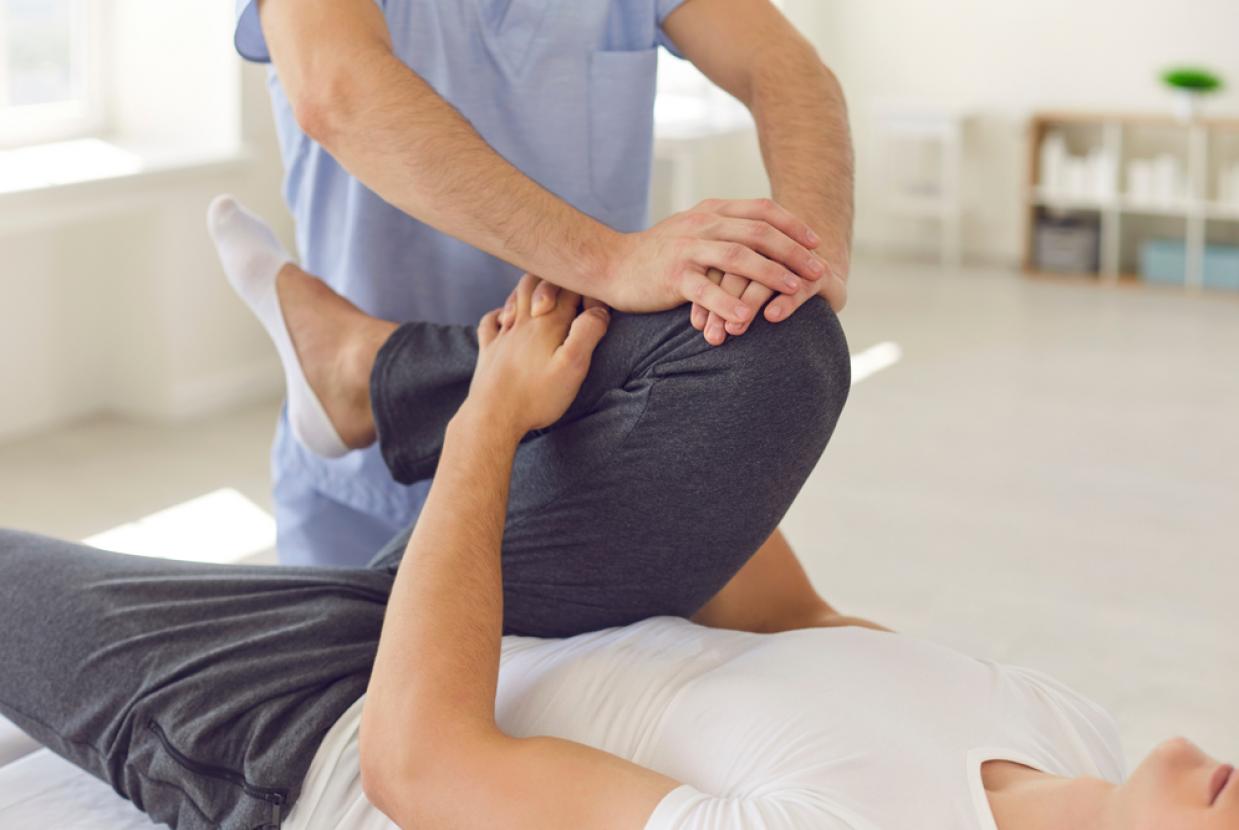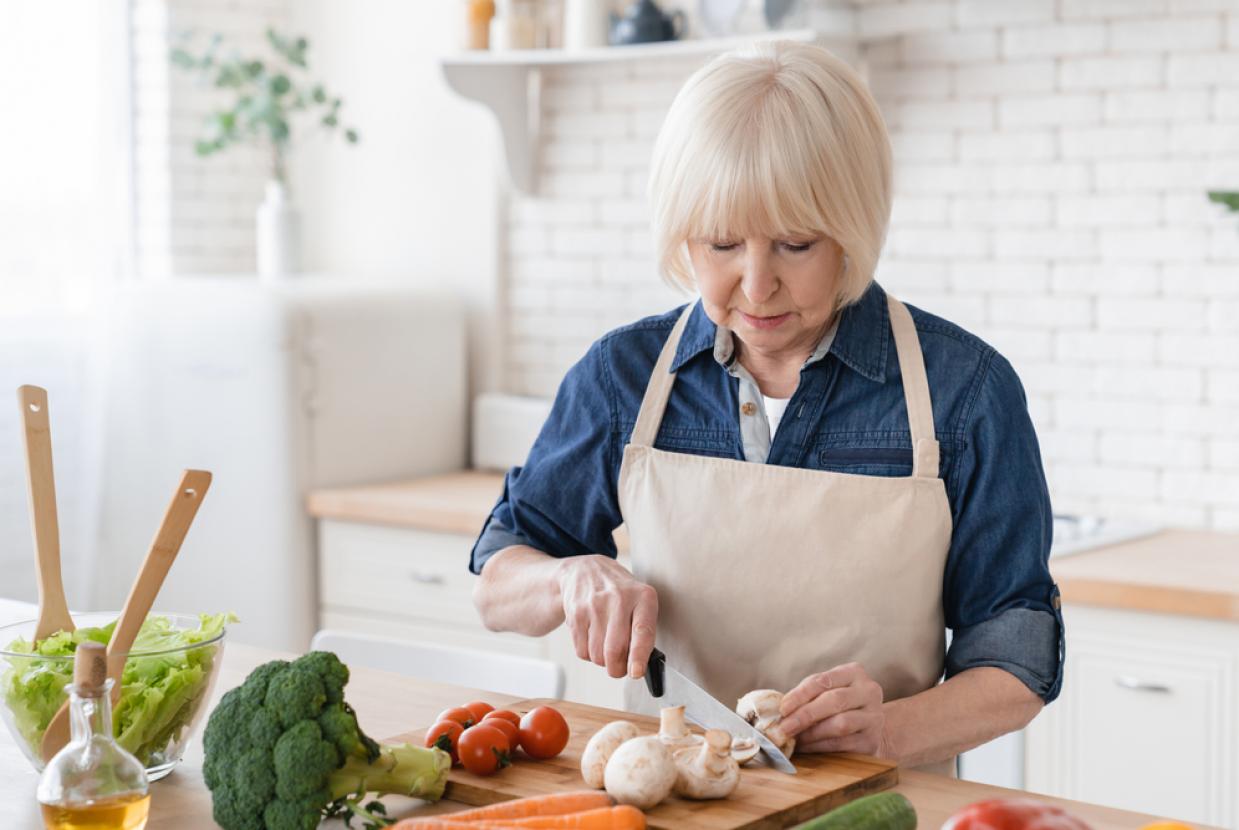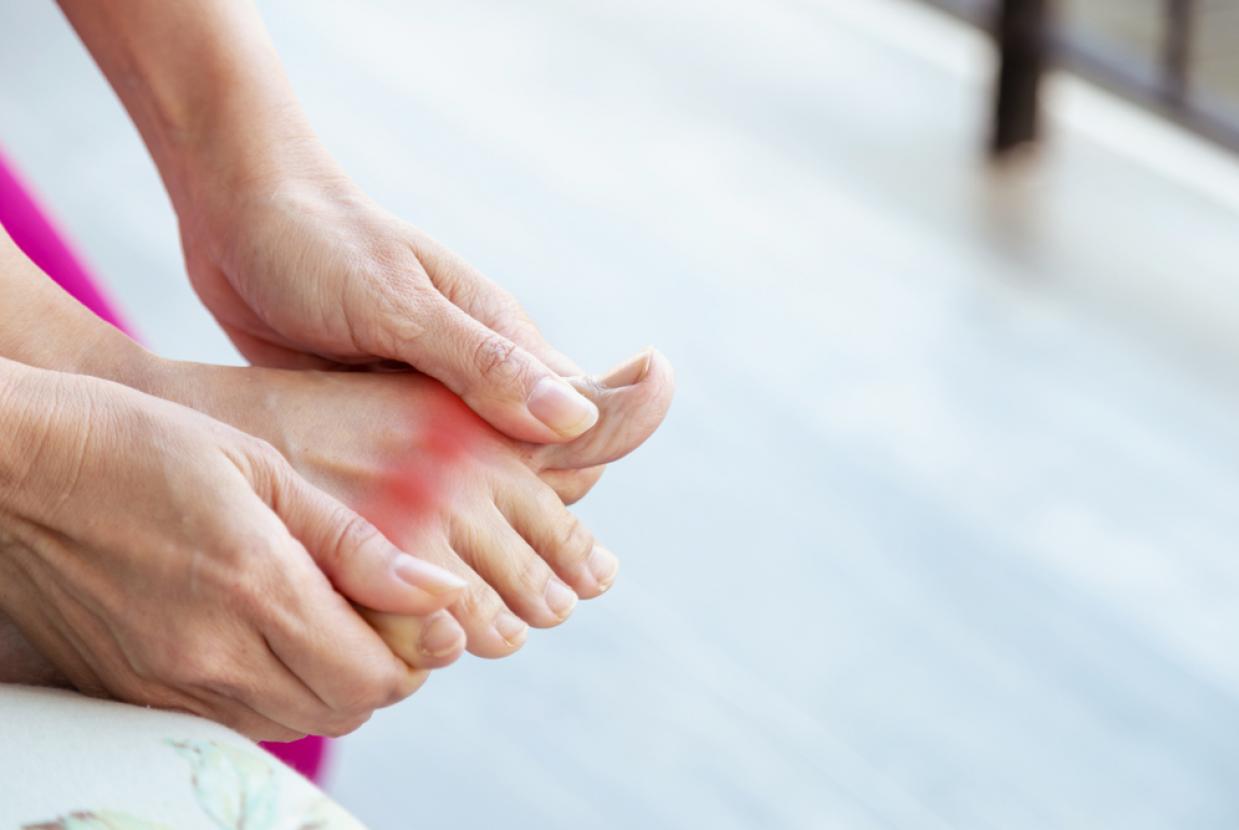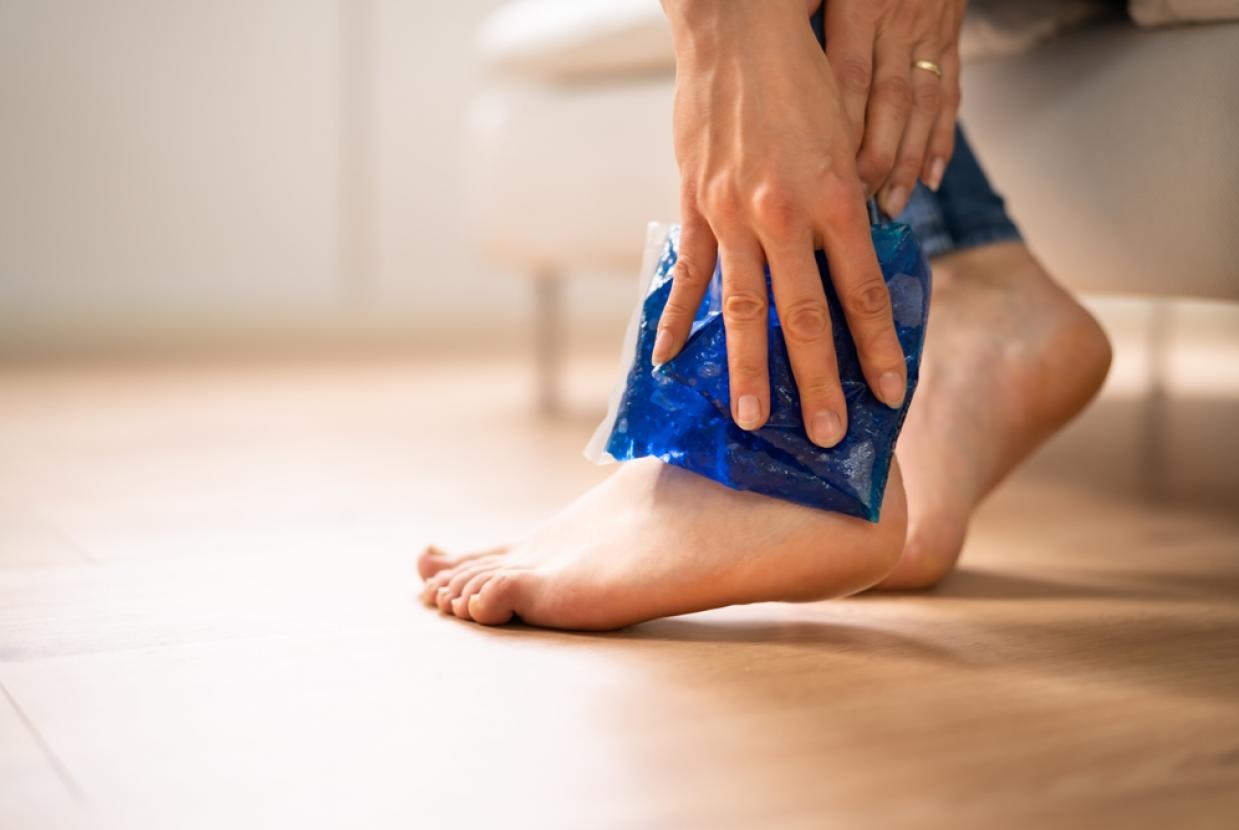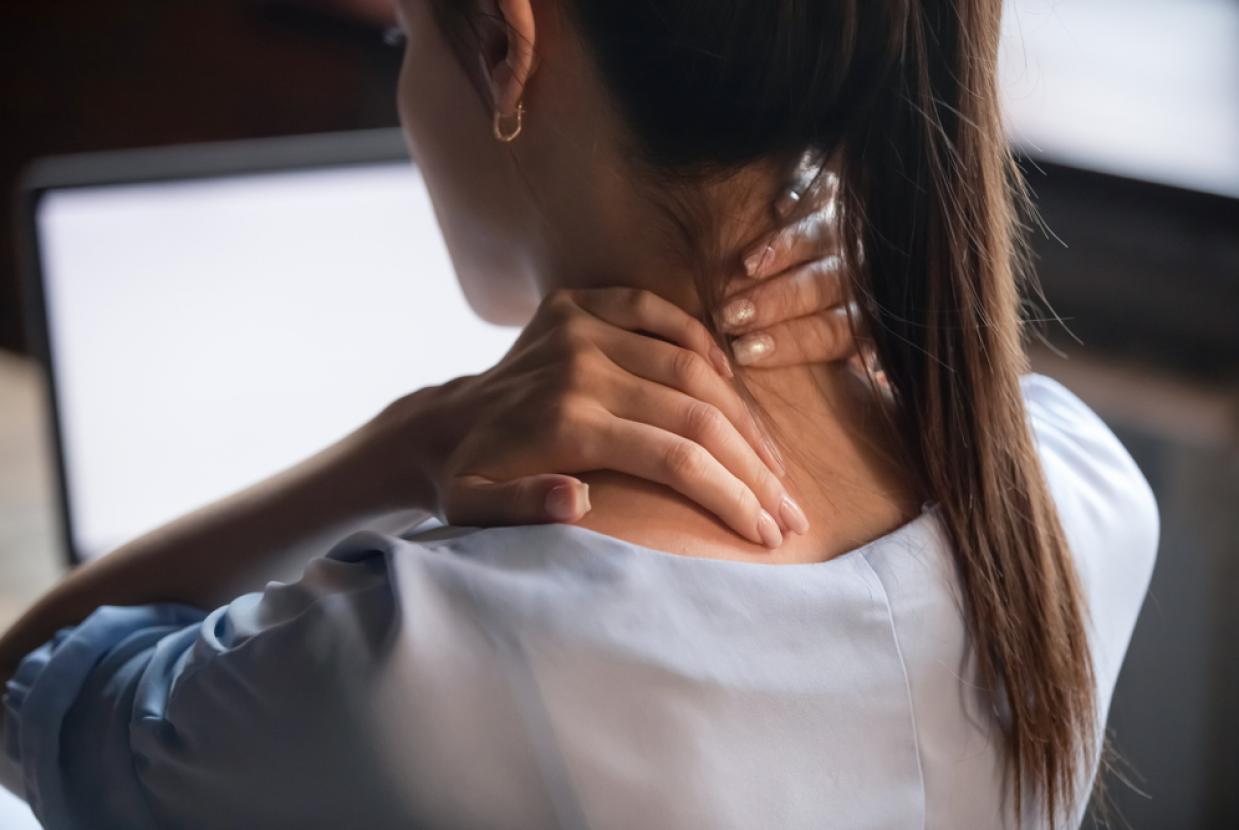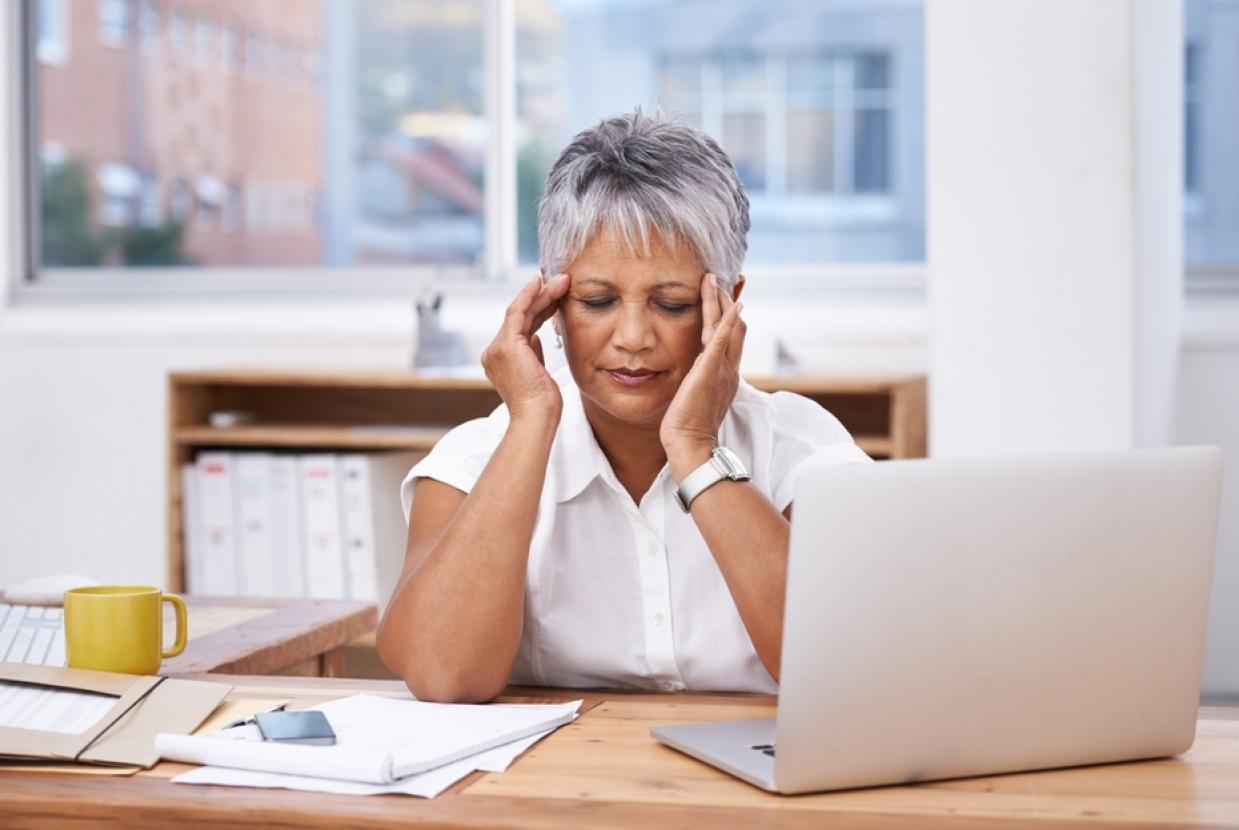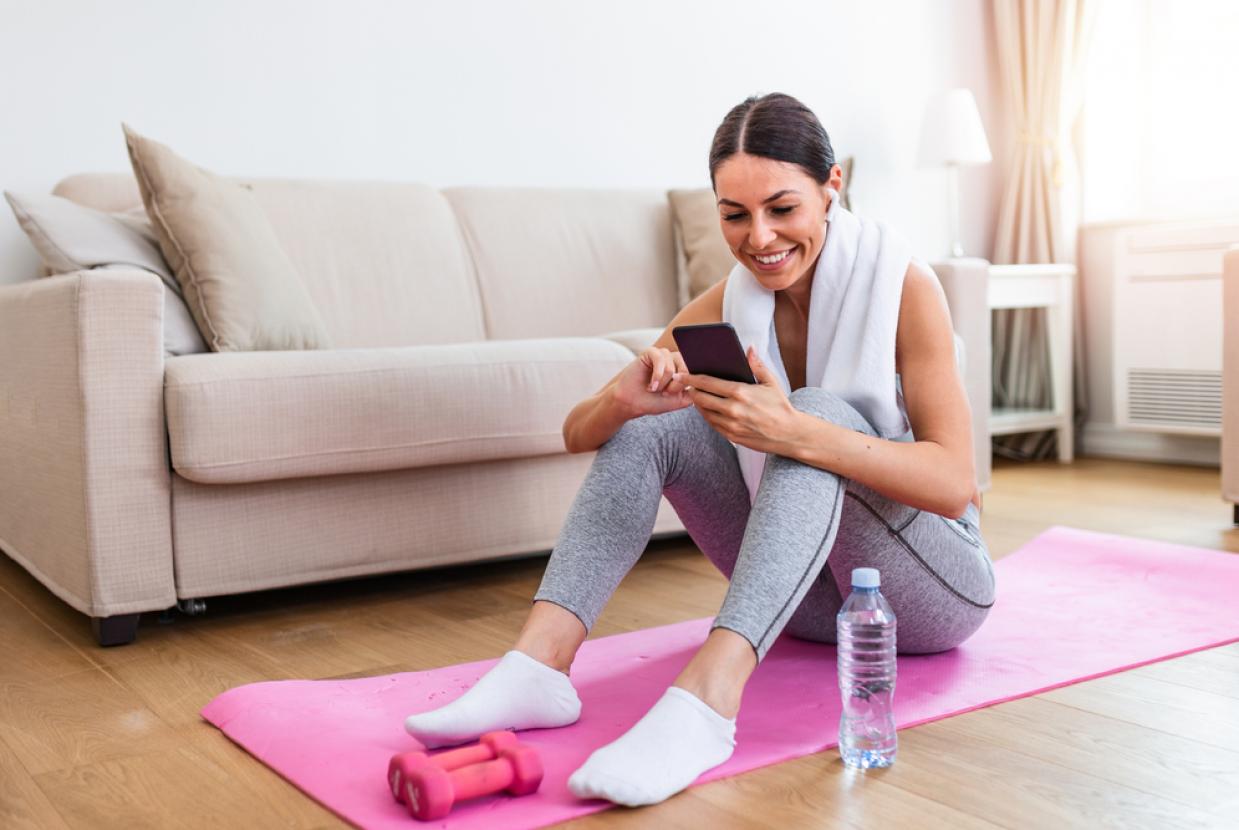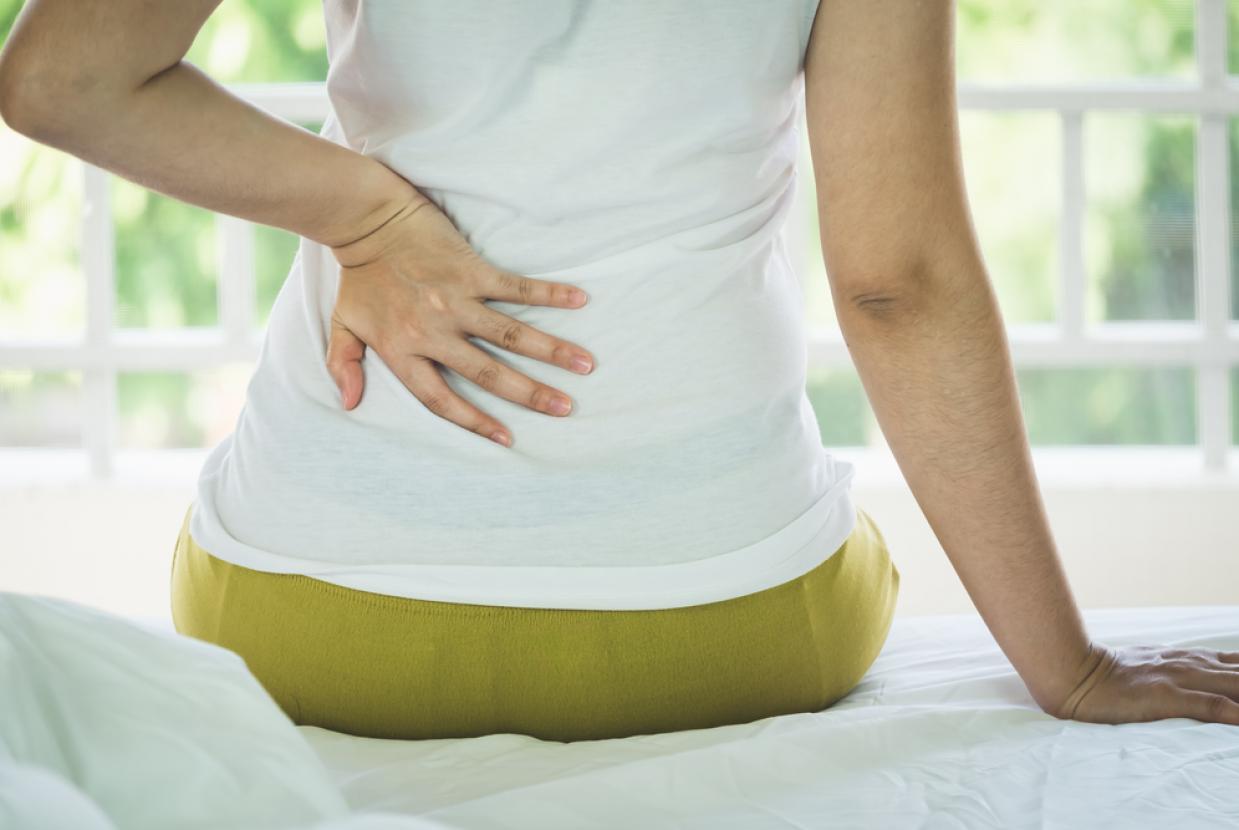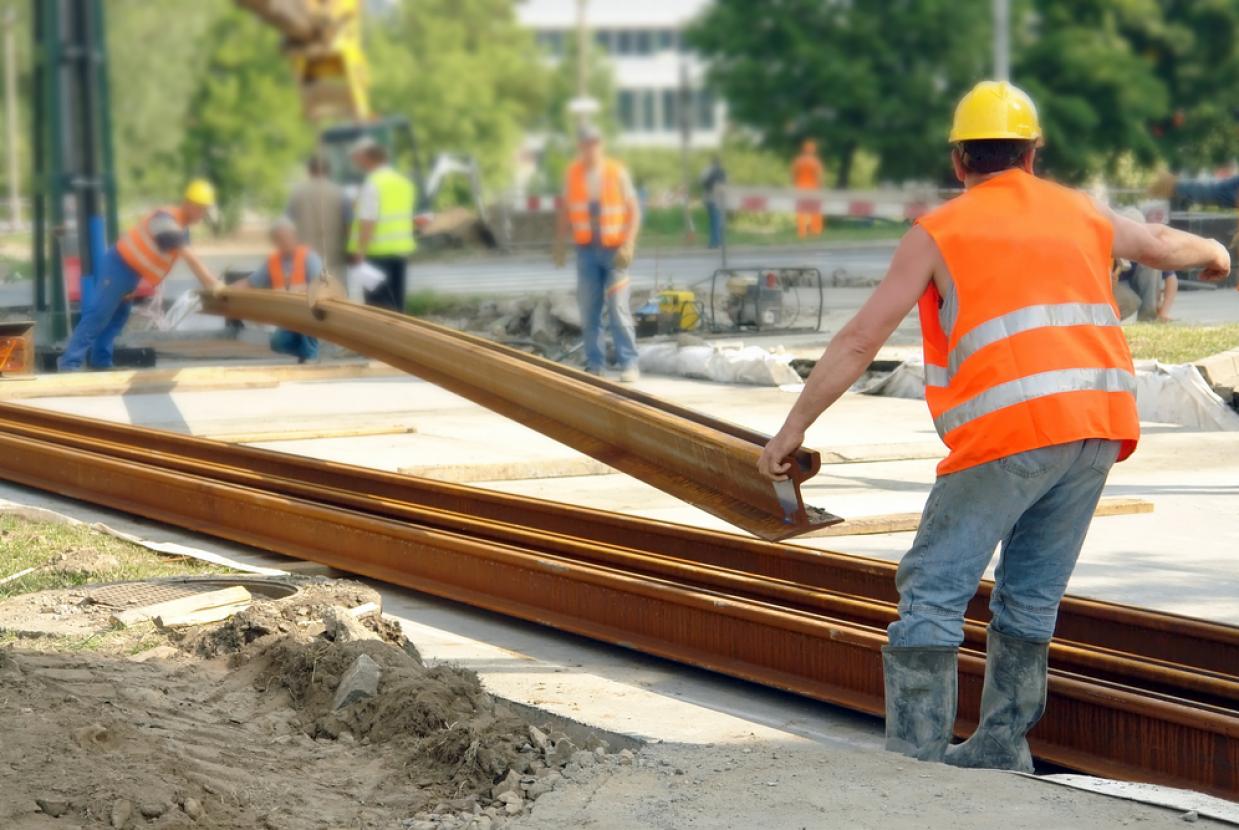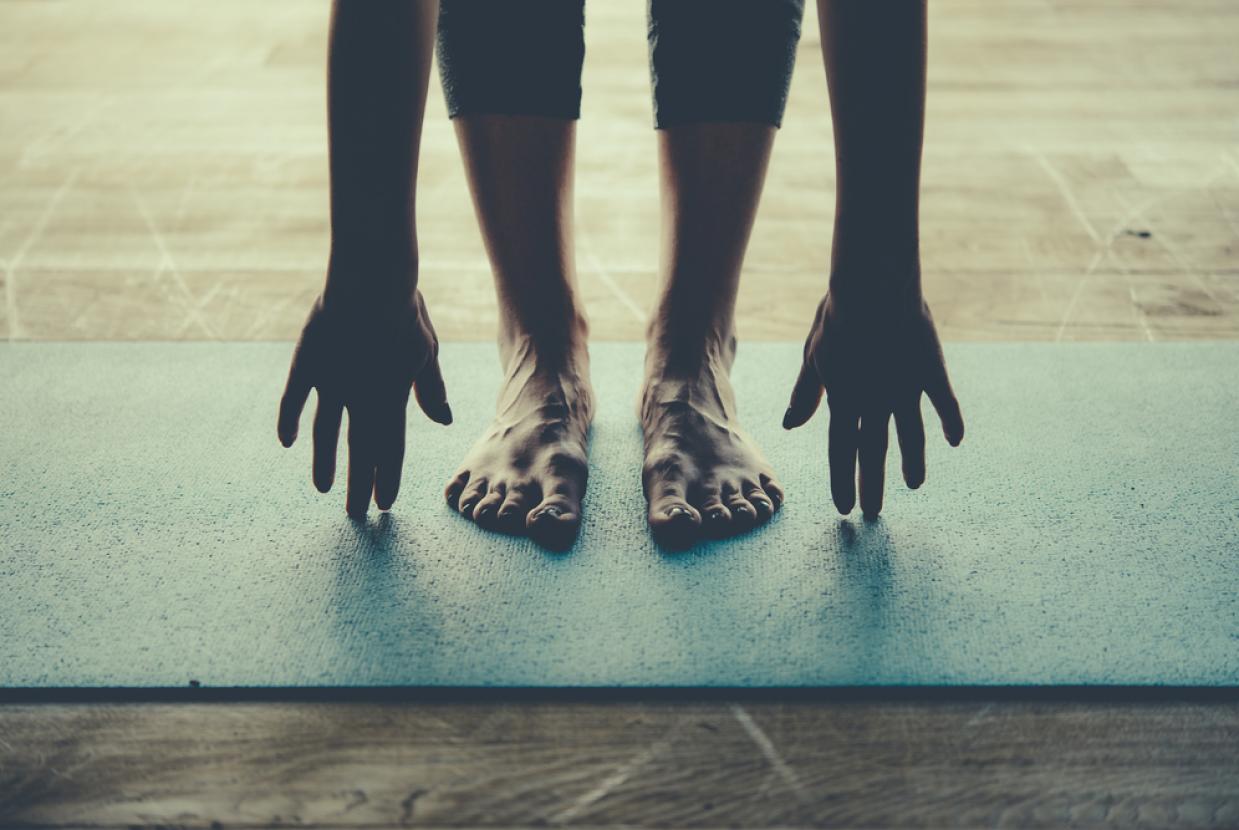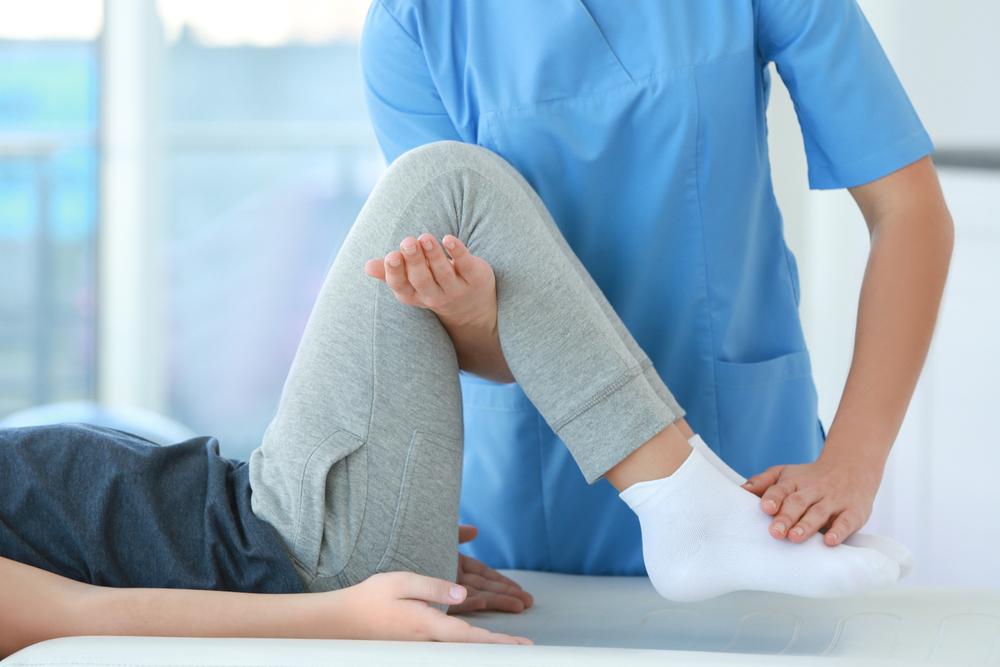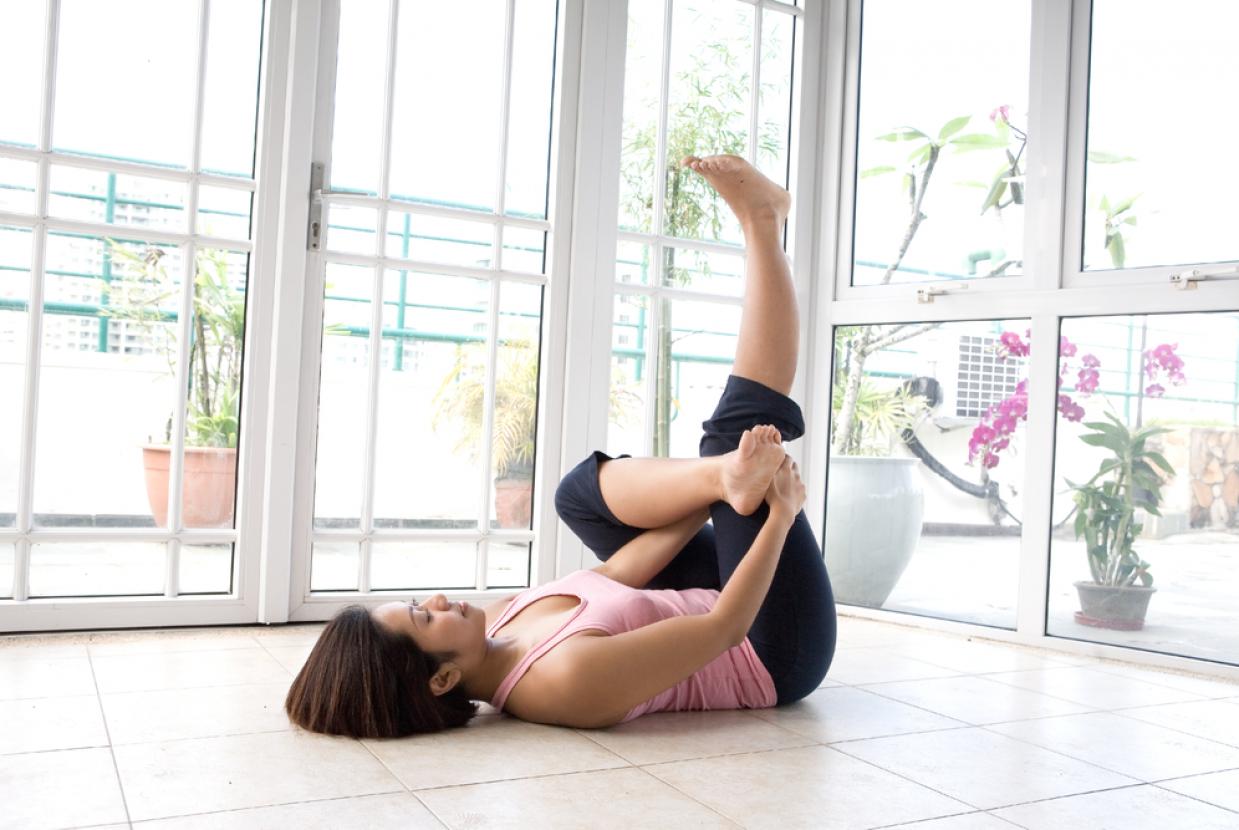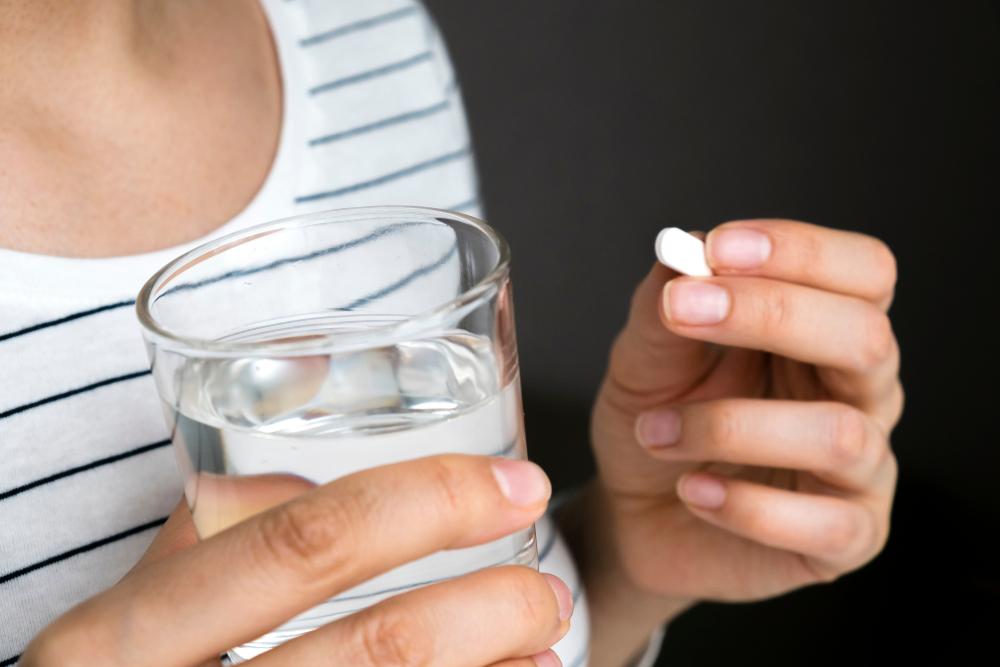Arthritis & Joint Care
Arthritis/Back Pain/Joint PainWhen you’re dealing with joint pain, everyday tasks such as getting in and out of the shower, getting dressed or making the bed can feel like a struggle.
However, you can reduce the pain and strain on your joints by changing the way you do things. This is called joint protection or joint care. Joint protection doesn’t mean that you should avoid using your joints. It’s simply about using your body in a way that doesn't strain or damage them.
What are the benefits of joint protection?
Research has shown that joint protection can help to reduce pain and make everyday activities easier.
Many people with arthritis also say that they have less stiffness in the morning and fewer flare-ups when they use these techniques regularly. A flare-up, or flare, is a period were your symptoms come back or get worse.
Everyone should look after their joints. But joint care is particularly important for people with arthritis because it can:
- reduce pain and inflammation
- help you deal with fatigue
- allow you to continue your daily activities.
What is a joint and how does it work?
A joint is where two or more bones meet and they allow different types of movement. The joint is held together by a capsule, which stops the bones from moving too far, and inside the capsule, there is an inner lining called the synovium. This makes a thick fluid, known as synovial fluid, that protects the joint.
The ends of the bones are covered with a thin layer of slippery tissue called cartilage. This acts as a protective cushion, stopping the bones from rubbing against each other.
Why should I protect my joints?
Arthritis can make daily activities even more challenging. The main obstacles people face are:
- joint pain and aching muscles
- loss of strength
- extreme fatigue, especially at the end of the day
- frustration when everyday tasks take longer to do
- worries about having to rely on other people for help.
However, by taking good care of your joints, you could make everyday tasks a little easier.
How do joints become damaged?
If you have arthritis, your muscles may weaken over time, causing the joint to become unstable. Your bones and cartilage may become damaged, and eventually your joints may change shape.
If you have an inflammatory type of arthritis that causes pain, swelling and stiffness in your joints, such as rheumatoid arthritis, your ligaments supporting the joint capsule can be stretched due to repeated joint swelling. The way you use your joints can contribute to these problems becoming worse, so that’s why joint protection is important.
When should I start looking after my joints?
We rely on our joints for almost every movement we make. So, it’s best to make joint protection a daily habit. Even if your joints are already sore, joint protection techniques can help ease the pain. Plus, joint protection can prevent further damage to your joints.
Joint care is a useful skill for any part of the body. But pay special attention to any joints that are affected by arthritis. For instance, if a joint feels painful, weaker or is changing shape. It may take a little getting used to, but even small changes could make a big difference.
Short-term ways to tackle joint pain and stiffness
There are plenty of ways you can look after your joints. Exercise can keep your joints strong and reduce fatigue and stiffness. Meanwhile, getting a good night’s sleep can help you better manage pain and fatigue.
However, pain can be unpredictable. Some days it might be harder than others to keep moving and that’s okay. Just listen to your body and be kind to yourself. If you’re having a flare-up or are in severe pain, here are a few ways you might be able to get relief. Then, when you’re ready, try some of our long-term tips to protect your joints from further damage.
Take painkillers
If you’re experiencing chronic pain, your doctor may prescribe painkillers. There are many different types including:
- Non-opioid painkillers – such as paracetamol.
- Anti-inflammatory drugs – such as ibuprofen or naproxen.
- Compound painkillers – this is when two different drugs are combined into one.
Your doctor will try and find the right painkiller for you depending on your situation and condition. This will help you stay active and keep moving.
Look after your feet
Having sore feet can make it harder to get out of the house. That’s why comfortable shoes are essential. Wearing good, supportive, properly fitting footwear can help improve your balance and posture. This reduces strain on your joints too.
It’s worth getting your feet measured each time you shop for new footwear. Remember that your feet change shape throughout your life.
If you have long-term feet problems, you might want to talk to your doctor, orthotist or podiatrist. A podiatrist is a healthcare professional who treats foot problems. They can tell you how to best look after your feet and may recommend that you try orthotics. These are insoles, inserts or specially made shoes that are designed to relieve pain and correct changes in your feet.
An orthotist is a healthcare professional who specialises in providing devices, such as splints and insoles, to support weakened joints, reduce pain and improve your mobility. Some devices are made-to-measure.
If you’re on the lookout for footwear recommendations, be sure to check out the online community. Here you’ll find first-hand tips and suggestions from people with arthritis.
Use splints
Wearing splints might offer some relief if you have painful, weak, or swollen joints. There are two types of hand and wrist splints you can choose from – working and resting splints.
If you’re unsure which one is for you, an occupational therapist can explore the options with you. Or you may be referred to a hand therapist. A hand therapist is an occupational therapist or physiotherapist who gives advice on exercises and treatments to improve and maintain the use of the hands.
There are different types of splints including:
- Working splints which provide support to help reduce pain while you’re working or going about your daily activities.
- Resting splints, which are designed to be worn at night if you have pain that affects your sleep or when resting (for example, when watching TV during the day). They have a custom-made cradle with straps to hold it in place.
- Some people find that compression (isotoner) gloves are also helpful in reducing pain and swelling and are easier to wear. These can be worn day or night when working or resting.
Long-term ways to reduce joint pain and stiffness
Painkillers and splints can offer quick relief. But if you really want to prevent further damage and pain, it’s important to keep moving and practise joint protection. Making these habits isn’t always easy. But even small changes could make everyday tasks such as cooking, cleaning, dressing, and washing a bit easier.
Here are some examples of joint protection:
- Notice any pain you feel and use it as a warning.
- Spread the weight over several joints when carrying things.
- Reduce the effort you put in – labour-saving gadgets can be a great help.
- Avoid gripping things tightly.
- Avoid positions that push your joints into awkward positions as this could lead to further problems.
- Use your joints in more stable positions.
- Stop and think about how you could do something differently if it hurts you.
We’ll dig a bit deeper into these techniques below so that you feel well equipped to try them out.
Respect your pain
Pain is a common symptom for many people with arthritis and it doesn’t always mean that you’re damaging your joints. It can be hard, but it’s important to stay active if you have arthritis because stopping movement could cause more damage to your joints.
However, if you’re in serious pain or feel like your pain is getting worse, it's not something to ignore. It might be a warning sign that you are pushing yourself too far and need to pace yourself or adapt the activity so it’s suitable for you.
Try to notice any aches and pains you may have and take a break every half an hour or so. If you’re still having pain, try taking more breaks next time as it might mean you can keep going for longer.
Ask yourself: how are you using the joints that hurt the most? Can you think of another way of doing things?
Let’s say your hands hurt when you are making a cup of tea. You could try to pick up the kettle with two hands instead of one. Or, if you’re struggling to stand for long periods, you could try to do some tasks sitting down.
Use stronger joints to do jobs
When carrying items, it’s best to use larger joints where possible because these are protected by stronger muscles. Try the following tips:
- Use your hip or shoulder instead of your hand to close a drawer or door.
- Hug larger objects close to your body as you carry them.
- Carry bags on your forearms instead of using your hands, as they are less likely to get injured.
Spread the load over several joints
If you’re carrying a heavy item, spread the load across several joints. For example, you could use two hands to carry heavy plates. This will put less strain on one joint in particular. The more joints you use to do a job, the better. Try these tips:
- Use two hands.
- Keep as much of your hand as possible in contact with the object.
- Avoid gripping with your thumbs.
Use less effort to do things
Pushing yourself too hard can make your joints more painful. So don’t do too much all at once. Instead, try to make things easier for yourself. You might want to:
- Ask for help, where possible.
- Reduce the weight of what you lift. For instance, if you’re moving a heavy cardboard box, you could take a few items out before lifting it.
- If you can’t reduce the weight, slide objects along a work surface or use a trolley or wheelbarrow.
- Use labour-saving aids and adaptions to make tasks a bit easier.
Aids are items of equipment that can help you manage everyday tasks such as dressing, cooking and walking. They can include walking aids, easy-to-use kitchen utensils and cutlery with large handles. Adaptations are changes made to your home to help you move around. They can include fixed ramps and baths with built-in handles.
If you’re struggling to do an activity, aids and adaptations could help you to live independently at home. For example, if you’re worried about falls and have been inactive for a while, you might find a walking stick gives you the confidence you need to keep moving.
Many people with arthritis are eligible to have aids and adaptions provided, free of charge, by their local authorities. Your council may call this ‘community equipment’. To see what you’re eligible for, ask your council for a free needs assessment. It varies a lot depending on your needs and where you live. If you’re already seeing an occupational therapist, they will assess your needs and provide you with aids, where needed.
Avoid gripping things tightly
You grip things tightly when doing tasks such as writing, knitting or when using tools like a screwdriver. However, this puts a lot of strain on your knuckle and thumb joints. To reduce this:
- Take frequent breaks and rest your hands briefly.
- Try to loosen your grip.
- Reduce the length of time you spend doing these activities.
- Use a padded handle to widen your grip.
Avoid positions that might increase your risk of joint problems
Arthritis can damage your joints over time, which can cause your bones and joints to be pushed out of their correct position. This might make everyday tasks - like opening a jar, fastening buttons, or twisting a doorknob - hard, painful, or impossible.
Your hands are most likely to be affected because they have lots of small joints and are constantly used. But certain positions can increase your risk. For example, you should try to avoid:
- lifting heavy objects with your wrists bent downwards
- using too few joints to do a job, for example, using a few fingers to carry a plastic bag instead of your forearm
- pushing your fingers over towards your little finger and putting pressure on your thumb
- twisting or over-straightening your fingers.
How can I use joints in more stable positions?
Try to use your joints in stable positions that spread the weight evenly over several joints. Don’t try to push your joints too far. If something is out of reach, for example, then you should get up and move closer to it, rather than stretching into an awkward position.
If you need help, try the following tips:
- Sit or stand as close as you can when working at a table or bench – this reduces stretching and bending.
- Keep your weight supported evenly through both legs, standing with your hips square, and facing forward.
- Use a grip that keeps your wrists straight and your fingers in line with your wrist when carrying things.
- When lifting objects, reduce the strain or pull on your shoulder by keeping your elbow bent and in front of your body, and keeping your palm facing the ceiling when reaching up. To lower your arm, bend your elbow, bringing your hand closer to your body.
Making changes
We know it can be hard to change habits. It takes time and patience. But if you stick with it, you might find that your joints become less painful and swollen.
It’s best to make changes bit by bit. You might find it helpful to write down the benefits you’ll get from making the changes. This will remind you why you need to stick with it. If you find it difficult to make changes, pick a task that’s causing you the most pain and make one change at a time. Even a small change could make a big difference.
Will exercise help my joint pain?
Many people with arthritis worry that exercise could further damage their joints. But, the truth is, exercising is good for us. Not only does it reduce symptoms such as pain and fatigue, but it’s great for your mental health too.
If you're new to exercise and don’t know where to start, it's a good idea to start slowly and build up gradually. If you’re feeling anxious, talk to your doctor or try a low-impact activity such as walking, cycling, tai chi or yoga.
Remember that any activity is better than nothing. Your body is designed to move and resting too much could actually harm your joints and the tissues around them. Many exercises don’t require special equipment. It’s all about finding what works for you. If you find an exercise you enjoy, chances are you’ll stick with it and stay active.
Some people find it motivating to exercise with a friend or in a group. We run activities across the country, such as walking groups and chair chi, for instance.












